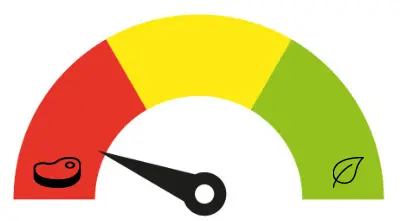Answer: Mostly no, though it depends on the brand and how it’s made.

Table of Contents
Can Vegans Eat Gum?
Vegans will tell you that they don’t eat meat and animal products. This is because of the belief that it is cruel to kill an animal for food. But what about chewing gum? Can vegans eat gum? The answer is partially yes. Intrigued? Keep reading to know more.
More on Gum for Vegans
Gum is often overlooked when it comes to being vegan. Most people don’t realize that most gums are animal-based and, therefore, not vegetarian or vegan.
Although chewing gum isn’t necessarily part of a diet, it’s safe to stay alert if you are a hard-core vegan. After all, gums can help with dental hygiene, freshen your breath, and even allow you to blow some big bubbles!
But did you ever wonder about the origin of gums and why they are so popular? Even though different manufacturing companies use several ingredients, the four main components for making gums are softeners, gum bases, flavorings, and sweeteners. And the part where the gum is chewable is all thanks to the gum base.
Chewing gum originated in the 1860s, and was derived from chicle, a natural gum. Today, rubber has taken over this ingredient for producing gums. The addition of softeners, sweeteners, and flavors makes chewing gums hard to resist.
So, what makes these harmless gums non-vegan, you ask? Well, it’s mostly to do with adding animal-based ingredients that companies sometimes use. Let’s take a look at some of them:
Gelatine
If you are a hard-core vegan, you would know that gelatine is derived from various parts of animals. These can be the skin, hooves, hide, or bones of cows and pigs. Some manufacturers tend to add this ingredient to the gums, making them unsuitable for vegans and vegetarians. The reason for adding gelatine is that it gives texture to the gum and acts as a binding agent. This helps provide the shape of the gums, like pellets.
Glycerine
Glycerine acts as a sweetener and is often used with xylitol. The production of this ingredient is tricky as it uses both plants and animals. Apart from using soybeans and other sources of plants, animal fat, or tallow, it also produces this ingredient. Luckily, some manufacturers mention it clearly on the label if its derivation is from plants.
Carmine
Another ingredient you should watch out for is carmine. It is made of a scarlet dye that is used for coloring food. This dye originates from female scale insects’ crushed and dried bodies. So, the next time you buy gum and notice a bright, unnatural, crimson-red color, make sure to go through the label properly.
Stearic Acid
The fourth ingredient is stearic acid. It naturally occurs in chocolate and is usable as an additive in some chewing gums as a thickener. Just like glycerine, its production can be from both animals and plants. Again, unless otherwise mentioned, it’s best to steer away from gums that don’t cite their source of derivation.
Lecithin
The last item on this list is lecithin, which is used in various foods like bread and chocolate. It usually comes from rapeseed, sunflower, soy, and animal products like eggs and milk. Just like stearic acid, lecithin is used as a softener in gums.
So, there you have it- the reasons why some gums are considered non-vegan. And unless you spot these ingredients on the chewing gum label, it’s safe to assume that it’s vegan.
Gum Alternatives for Vegans
So, now you know why and how you can’t label some gums as vegans. Alternatively, some brands have been manufacturing vegan gums since the beginning. Some of these are:
- Wrigley
- Dubble Bubble
- Hubba Bubba
- Orbit
- B-Fresh
- Juicy Fruit
- 5 Gum
- Extra
- Pur
- Eclipse
- Mentos Gum- Note that Mentos Strawberry Squeeze, 3 Layer, and Juice Burst gum are non-vegan
You can always choose from these brands if you love chewing gum and can’t seem to get enough of it. Also, gums with spearmint, peppermint, sweet watermelon, winter mint, and bubble gum flavors also fall under vegan gums.
So, the next time you want to give your mouth some exercise, take extra caution and remember to read the label. This way, you can assure yourself that you’re not breaking the rules and sticking to a vegan diet! Share this information with your vegan friends, too, so they will also know which gums they can opt for.

